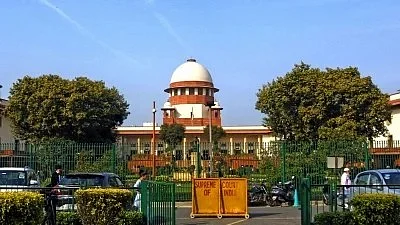SC reserves verdict on uniform seniority norms for higher judicial services
Constitution bench weighs nationwide criteria to address career stagnation of entry-level judges; final judgment awaited

The Supreme Court on Tuesday reserved its verdict on whether uniform, nationwide criteria should be framed for determining seniority in the Higher Judicial Service (HJS) cadre, a move aimed at addressing slow and uneven career progression for judicial officers across India.
A five-judge Constitution bench led by Chief Justice of India B.R. Gavai and comprising Justices Surya Kant, Vikram Nath, K. Vinod Chandran and Joymalya Bagchi reserved judgment after hearing arguments from senior advocates, including amicus curiae Sidharth Bhatnagar and lawyers Rakesh Dwivedi, P.S. Patwalia, Jayant Bhushan and Gopal Sankaranarayanan.
The bench has been examining concerns that judicial officers who join the service at the entry level as civil judges often struggle to rise to senior posts such as principal district judge, and therefore rarely reach the high court bench. The court observed that this lack of clear progression discourages talented young lawyers from opting for judicial service.
The matter stems from long-standing concerns over disparities in promotion procedures across states, including the weight accorded to seniority versus merit.
During the hearings, which began on 28 October and continued on 19 October and 4 November, the bench said an element of nationwide 'uniformity' may be needed to ensure fairness and efficiency in career progression.
On 14 October, the court formally framed the central question: “What should be the criteria for determining seniority in the cadre of Higher Judicial Services?” It also noted that it may consider ancillary issues related to judicial career advancement.
Bhatnagar submitted that promotions in many states remain largely seniority-driven, citing the role of annual confidential reports in shaping evaluations. Dwivedi, representing the Allahabad High Court, urged caution and argued against imposing a uniform model, emphasising the constitutional autonomy of high courts in managing subordinate judiciary administration.
The seniority and promotion issue traces back to a plea filed by the All India Judges Association in 1989, seeking reforms in the service structure for lower court judges. On 7 October this year, the Supreme Court referred the matter to the present Constitution bench noting the scale and significance of concerns around stagnation.
The judgment, once delivered, is expected to have wide-ranging impact on the judicial service architecture across states, potentially shaping recruitment incentives, performance evaluation and long-term career pathways for judicial officers.
With PTI inputs
Follow us on: Facebook, Twitter, Google News, Instagram
Join our official telegram channel (@nationalherald) and stay updated with the latest headlines
